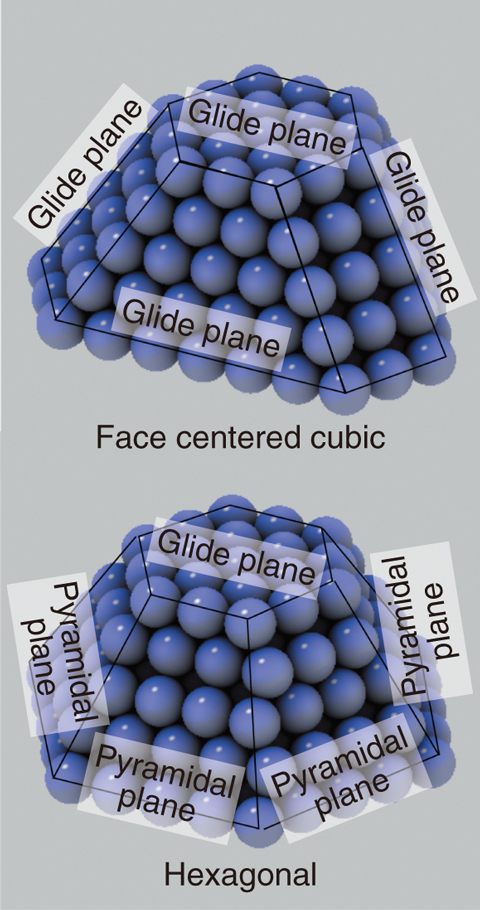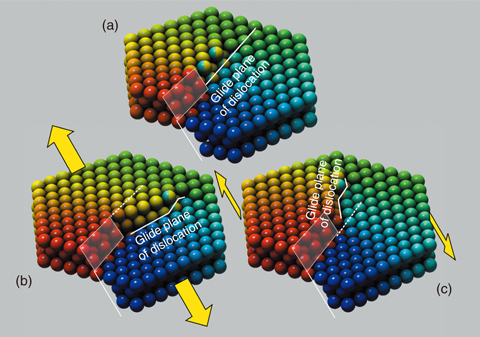
Fig.10-6 Two typical atomistic structures of metals

Fig.10-7 Motion of a dislocation in a hexagonal structure
The structures of metallic elements are classified into three types, namely, face-centered cubic (FCC), body-centered cubic, and hexagonal. Hexagonal metals such as magnesium and zirconium are difficult to deform, and formation of these metals requires elevated temperature. Typical examples are the manufacturing of nuclear fuel claddings composed of zirconium alloy and the magnesium housing of notebook PCs. Recently, it has been observed that the addition of alloying elements into hexagonal metal lowers the temperature required for the forming process. To further lower the temperature and enable room-temperature forming, much effort is now being invested in elucidating the relevant mechanism and finding the optimal composition of the alloy. The success of these studies will enable several industrial breakthroughs, such as tougher fuel claddings and lighter automobiles. For this purpose, it is necessary to study the forming process at an atomistic scale.
Fig.10-6 shows atomistic planes in FCC and hexagonal structures. Planes with triangular alignment easily glide. Since the FCC structure has four such planes, glides can occur in various directions and formation of the material is easy. In contrast, the hexagonal structure has only one such plane and the six pyramidal planes on the side comprise alternating triangular and square alignments that make gliding more difficult.
To improve the formability of hexagonal metals, we need to identify the gliding mechanism of the pyramidal planes. We studied magnesium for this purpose. The glide of atomistic planes is induced by the motions of “dislocation lines,” just like that one can glide a large carpet by moving a ruck on it. Typically, a dislocation line is confined to a specific plane, but in magnesium, it has been observed that the dislocation line changes its glide plane via some unknown mechanism. We closely investigated the glide process using first-principles calculation and elucidated the responsible mechanism.
In FCC metals, the change in the glide plane requires extensive rearrangement of nearby atoms and high activation energy; however, in hexagonal metals, we found a way to do it with only modest rearrangement. We also confirmed that the glide plane actually changes easily when a force is applied, as shown in Fig.10-7. Such behavior has not been known, until our close examination of the dislocation in hexagonal metal.
We will continue investigating the effect of alloying elements upon the glide process and elucidating the mechanism of formability improvement.